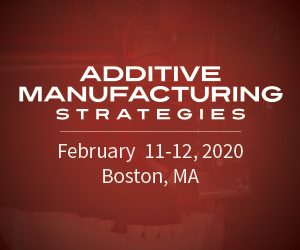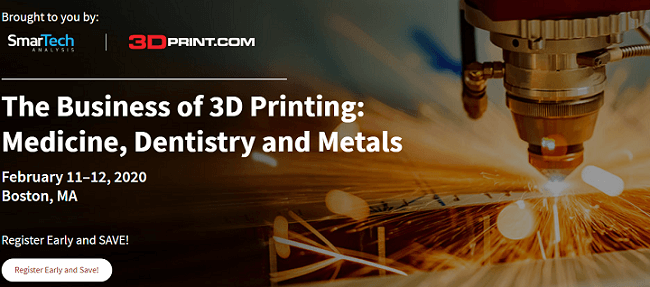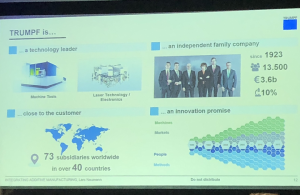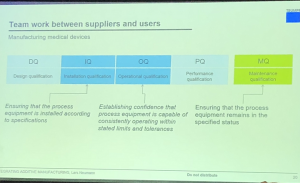In February 2020, the third annual Additive Manufacturing Strategies summit, co-hosted by 3DPrint.com and SmarTech Markets Publishing, will be held in Boston – the same city it called home last year, though the first event was held in Washington D.C. There will be two separate tracks – one for medical and dental 3D printing and a new one strictly for metals – at this year’s conference, officially titled “The Business of 3D Printing: Medicine, Dentistry and Metals.”
If you’re interested in attending this year’s AMS, you’ve still got plenty of time to save on your registration, as early bird rates last until September 18th. The event will be held at Boston’s Seaport World Trade Center in the city’s Innovation Center from February 11-12, and you can sign up for our conference email newsletter in order to keep up with the latest speaker and exhibitor updates.
“The AMS 2020 Exhibition will give attendees the opportunity to see the latest 3D printing products for metals printing and 3D printing in the medical/dental space, as well as the ability to network with other attendees to exchange experiences and conduct business,” the website explains.
“As usual, the conference offers over 30 expert speakers, with this year’s focus being on end-user experiences, as well as the vendor, materials company and regulatory perspectives. As always with AMS, attendees will learn the most effective procedures and business opportunities in the critical sectors of 3D printing on which AMS 2020 is focused.”
There were many speakers at last year’s AMS in Boston, from across a range of industries. In addition to multiple panelists and two featured workshops, SmarTech’s VP of Research Scott Dunham presented on 3D printing forecasts and trends in both the medical and dental fields.
Dr. Ali Tinazli, the Head of Healthcare and Life Sciences Strategy for HP, was the first keynote speaker for last year’s event, and discussed “3D Printing Going Mainstream for Health 4.0,” with the main theme centered around the democratization of medicine and the implications. The second keynote speaker at AMS 2019 was Lars Neumann from German machine tool supplier TRUMPF, who talked about 3D printed instruments and implants in his “Integrating Additive Manufacturing Into Medical Device Production” presentation.
 Topics to be covered at AMS 2020 will include the following:
Topics to be covered at AMS 2020 will include the following:
- materials sciences
- VC and investing
- IP and legal
- 3D bioprinting
- dental
- medical
- prosthetics and wearables
That being said, we are now looking for those interested in being speakers at this upcoming event. Our current speaker list includes Dr. Gregory Brown, the Vice President of Process Engineering at Velo3D, who will be in charge of a panel discussion on multilaser 3D printing. Other panels, debates, and fireside chats will cover a wide range of topics, including compact metal 3D printers, 3D printing in orthopedics, aluminum and copper in additive manufacturing, markets for 3D printable biomaterials, and patents for metal 3D printing.
If you are interested, please contact marilyn@3DPrint.com.
 In addition to speakers, time for networking, and an exhibition hall, AMS 2020 will once again feature our popular Startup Competition, where finalists can compete for the chance to win a $15,000 investment from VC fund Asimov Ventures. The winning company will also be profiled on 3DPrint.com.
In addition to speakers, time for networking, and an exhibition hall, AMS 2020 will once again feature our popular Startup Competition, where finalists can compete for the chance to win a $15,000 investment from VC fund Asimov Ventures. The winning company will also be profiled on 3DPrint.com.
Seed-stage 3D printing startups can apply for the 2020 Additive Manufacturing Strategies Startup Competition until December 1st, 2019; interviews will take place from December 2-9, and the finalists will be announced by December 15th.
Register today for Additive Manufacturing Strategies, February 11-12, 2020, in Boston.
Discuss this news and other 3D printing topics at 3DPrintBoard.com or share your thoughts in the Facebook comments below.
[Photographs taken by Sarah Saunders for 3DPrint.com]
The post Additive Manufacturing Strategies: Call for Metal, Dental, and Medical 3D Printing Speakers appeared first on 3DPrint.com | The Voice of 3D Printing / Additive Manufacturing.









